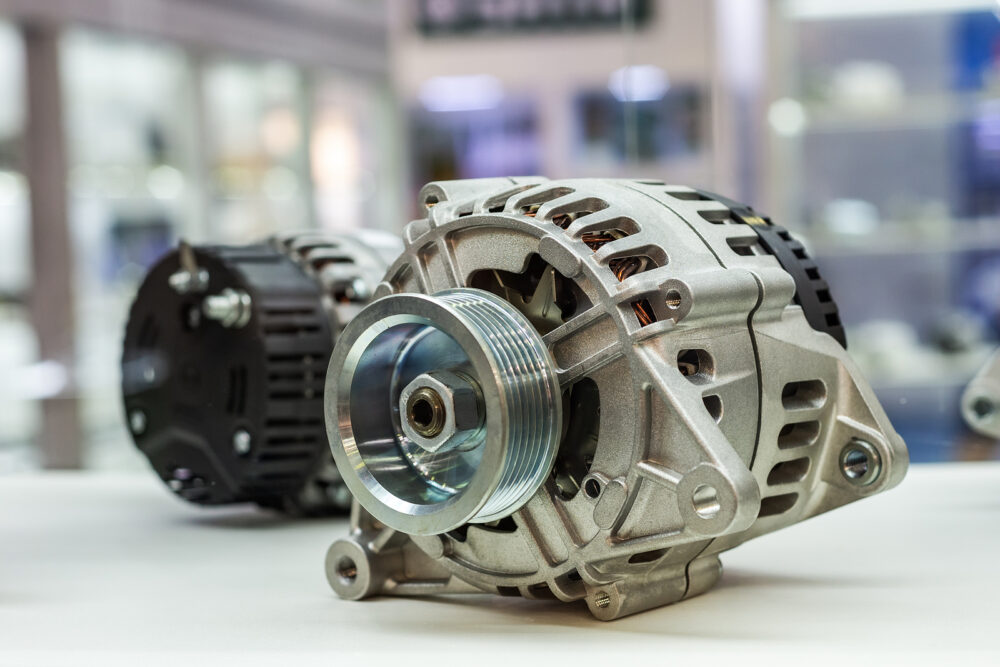Electric cars have become a focal point in the automotive industry’s quest for sustainability and innovation. As these vehicles continue to gain popularity, questions arise regarding their internal components and how they differ from traditional gasoline-powered cars. One common inquiry is, “Does Electric Cars Have Alternators?” In this comprehensive exploration, we delve into the intricacies of electric car engineering, shedding light on whether they rely on alternators and how they generate electricity.
Introduction: Decoding the Electrical Dynamics of Electric Cars
In the realm of electric vehicles (EVs), the traditional components found in internal combustion engine cars undergo a significant transformation. Understanding the electrical dynamics of electric cars is essential to grasp the role of alternators, or whether they exist in these cutting-edge vehicles. Join us on a journey into the heart of electric car technology to uncover the mysteries behind their power generation.
Electric Cars and Alternators: Debunking the Myth
The presence of alternators in gasoline-powered cars is a well-established fact. However, when it comes to electric cars, there exists a common misconception about whether they have alternators. To clarify, electric cars do not have alternators in the traditional sense that internal combustion engine vehicles do. Instead, they utilize a different set of components to generate and manage electrical power.
Electric Motor as the Powerhouse
At the core of every electric car is the electric motor, a pivotal component responsible for converting electrical energy stored in the battery into mechanical energy that propels the vehicle. Unlike the alternator in traditional cars, which generates electricity by harnessing the mechanical energy from the engine, electric cars rely on the electric motor for both propulsion and the generation of electricity.
Regenerative Braking: A Clever Twist in Electric Car Technology
One of the distinctive features of electric cars contributing to their energy efficiency is regenerative braking. While traditional cars dissipate braking energy as heat, electric cars harness this energy and convert it back into electricity. This process occurs within the electric motor, acting as a quasi-alternator during deceleration. Understanding regenerative braking is crucial in comprehending the dynamic ways electric cars generate and manage electrical power.
The Role of the Power Inverter
In the absence of alternators, electric cars incorporate a critical component known as the power inverter. This device converts the direct current (DC) stored in the battery into alternating current (AC) to power the electric motor. Additionally, the power inverter manages the flow of electricity between the battery, motor, and other auxiliary components, ensuring optimal performance and efficiency.
Battery Management System: Ensuring Power Stability
To maintain the stability and longevity of the electric car’s battery, a sophisticated Battery Management System (BMS) is employed. The BMS monitors and regulates various parameters, including voltage, temperature, and state of charge. This system plays a pivotal role in the overall power management of the electric car, ensuring a seamless and safe operation without the need for traditional alternators.
Charging Infrastructure and External Power Sources
Unlike internal combustion engine cars that rely solely on alternators for electrical power, electric cars have the advantage of diverse charging options. Owners can recharge their electric vehicles using dedicated charging stations, home chargers, or regenerative braking. This flexibility in power sources adds another layer to the efficiency and sustainability of electric cars.
Read too: The Allure of BMW iX Storm Bay Metallic – A Symphony of Design and Innovation: Unveiling Elegance
Conclusion: Deciphering the Electrical Ecosystem of Electric Cars
In conclusion, the question of whether electric cars have alternators requires a nuanced understanding of their unique electrical ecosystem. While the traditional alternator is absent, electric cars employ innovative components such as electric motors, regenerative braking, power inverters, and Battery Management Systems to generate and manage electrical power. As electric vehicles continue to redefine the automotive landscape, comprehending their electrical dynamics becomes crucial for both enthusiasts and prospective owners.
